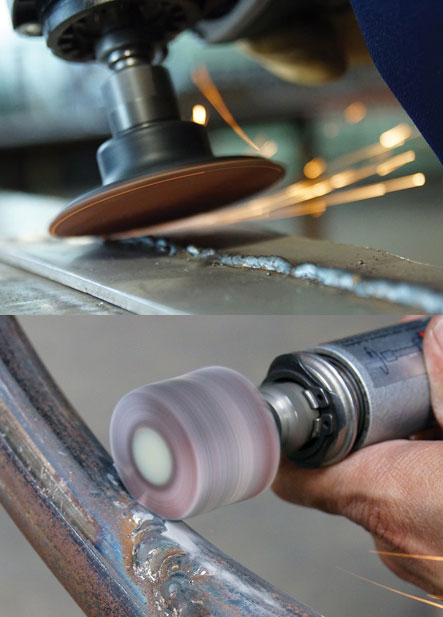Company Profile
Since planting its roots in New England in 1927, Bullard Abrasives has had great success in manufacturing. For decades the company focused on specialized products. It was not until the 1990 to 2000 time-frame, however, that new owners began redirecting the marketing focus away from specialized products and in favor of long production run, general purpose products.
Today, Bullard provides general purpose grinding and cutting abrasives for use on a variety of portable power tools. Bullard manufactures wheels that are designed to cut and profile a variety of materials used in welding, fabrication and construction applications.
Seventy-five percent of Bullard’s production of wheels is supplied to major original equipment manufacturer (OEM) customers under private label while the remaining 25 percent is supplied under the Bullard name to industrial and construction distributors throughout the U.S.
Beginning in 2003, the Westborough, MA-based company was experiencing significant growth, so much that it was “busting at the seams” forcing a corporate relocation to Rhode Island. In 2006, Bullard completed construction of a state-of-the-art manufacturing plant in Lincoln, three times the size of its original location. With more space in a new facility, Bullard was not only able to fulfill customer needs but it was also able to prepare for all future manufacturing needs.
Situation
While preparing for its future, Bullard began to witness a significant shift in the industry. Companies were suddenly in favor of sending work to low-cost producing nations such as China or to other nations that directly subsidize exports so that the supplier receives a significant cost advantage.
“Both of these events have negatively impacted market prices to such an extent that many U.S. producers have ceased to exist,” said Bullard Abrasives President, Craig A. Pickell. “Bullard refuses to be a casualty of this market shift.”
With jobs going overseas and companies shutting down, executives at Bullard knew it was time for change. It was then they recognized it was time to focus on engineering, quality manufacturing, and innovation. “The management team recognized that the company needed to reach beyond its own internal resources to accomplish its objectives and that led to developing a partnership with Rhode Island Manufacturing Extension Services,” Pickell said.
In order to become certified, Bullard needed to demonstrate its ability to consistently provide product that meets both customer, and applicable statutory and regulatory requirements, and enhancement of customer satisfaction through the application of systems including processes for continual improvement and assurance of conformity to those requirements.
Bullard had a goal to achieve total quality which naturally led to achieving certification from the International Organization of Standards or ISO. To achieve the goal of ISO 9001: 2008 certification Bullard sought the assistance of an ISO specialist, Polaris MEP consultant, John Gilheeney.
IMPACTS
| ISO 9001:2008 certification | ||
| Secured a global sourcing contract with a large, international company | ||
| Noticeable improvements in operating efficiency |
||
| New level of employee enthusiasm | ||
| Steady growth in a declining market |

“Our management team was so impressed with the results of our partnerships with (Polaris MEP) and Mr. Gilheeney that we immediately committed to another project for 5S Lean Manufacturing,” Pickell said. “We are expecting results from 5S to be similar to what was achieved with ISO and will explore other (Polaris MEP) programs to give us the direction to be globally competitive.”
Craig Pickell, President
Solution
Polaris MEP was able to step in and provide consulting services thanks to a funding grant provided by the Rhode Island Economic Development Corporation.
In December 2007, Polaris MEP began turning Bullard’s wheels to become certified. The company did a full assessment of the business. Once completed, Bullard refined its mission, goals and objectives and had a clear picture of where it was heading.
“From there we put every operation under the microscope and crafted new or revised instructions and measurements for all the processes,” Pickell said. “At the core of this was the involvement of every member of our employee family, thus in a sense this was a grass roots transition from the traditions of the past to the new and enlightened age of top-notch quality management and innovation.”
The process to receive certification took nearly 18 months, according to Bullard.

